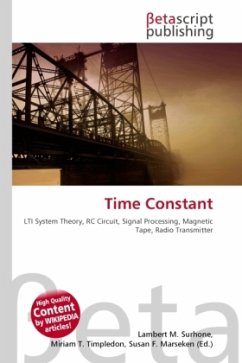
Time Constant
Versandkostenfrei!
Versandfertig in 6-10 Tagen
26,99 €
inkl. MwSt.

PAYBACK Punkte
13 °P sammeln!
High Quality Content by WIKIPEDIA articles! In physics and engineering, the time constant, usually denoted by the Greek letter ? (tau), is the risetime characterizing the response to a time-varying input of a first-order, linear time-invariant (LTI) system. (That is, a system that can be modeled by a single first order differential equation in time. Examples include the simplest single-stage electrical RC circuits and RL circuits.) In the time domain, the usual choice to explore the time response is through the step response to a step input, or the impulse response to a Dirac delta function in...
High Quality Content by WIKIPEDIA articles! In physics and engineering, the time constant, usually denoted by the Greek letter ? (tau), is the risetime characterizing the response to a time-varying input of a first-order, linear time-invariant (LTI) system. (That is, a system that can be modeled by a single first order differential equation in time. Examples include the simplest single-stage electrical RC circuits and RL circuits.) In the time domain, the usual choice to explore the time response is through the step response to a step input, or the impulse response to a Dirac delta function input. In the frequency domain (for example, looking at the Fourier transform of the step response, or using an input that is a simple sinusoidal function of time) the time constant also determines the bandwidth of a first-order time-invariant system, that is, the frequency at which the output signal power drops to half the value it has at low frequencies.












